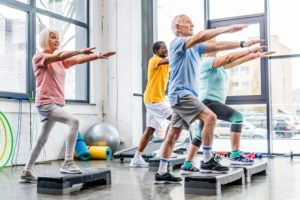
At the age of 30, we begin to lose muscle and bone density by one percent annually. This triples by the time we hit 70.
Depending on your age, you may think that you’re too old to start reversing muscle loss that has occurred, but you are mistaken. Regardless of your age, it is never too late to start regaining muscle to become stronger. The key is to get on a program that is best suited to your needs and abilities. This means working closely with a professional physiotherapist or trainer to create a personalized plan.
It is suggested that the best type of workout to build strong muscle is resistance training. Resistance training has been found to increase muscle mass by nearly 20 percent within a couple of years. This can have a large impact on a senior’s quality of life.
Studies from Italian and Australian researchers provided recommendations on the best types of workouts for seniors looking to increase their muscle mass. These include weight lifting, body resistance exercises, and using resistance bands.
As for warm-ups and cooldowns, older adults should double up on this time. Rather than the typical five to 10 minutes to warm-up and cooldown, take 10 to 20 minutes. Range of motion exercises are also important as they improve a person’s functionality.
Older adults should aim for at least three workouts a week and should try to reduce their periods of inactivity.
If you want to start improving your muscles and bones, speak to your doctor about how to begin a workout plan that is best for you.